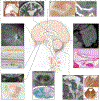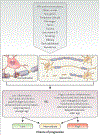Multiple Sclerosis
- PMID: 29320652
- PMCID: PMC6942519
- DOI: 10.1056/NEJMra1401483
Multiple Sclerosis
Figures




References
-
- Brownlee WJ, Hardy TA, Fazekas F, Miller DH. Diagnosis of multiple sclerosis: progress and challenges. Lancet 2017;389(10076):1336–46. - PubMed
-
- Signori A, Gallo F, Bovis F, Di Tullio N, Maietta I, Sormani MP. Long-term impact of interferon or Glatiramer acetate in multiple sclerosis: A systematic review and meta-analysis. Multiple Sclerosis and Related Disorders 2016;6:57–63. - PubMed
Publication types
MeSH terms
Substances
Grants and funding
LinkOut - more resources
Full Text Sources
Other Literature Sources
Medical
